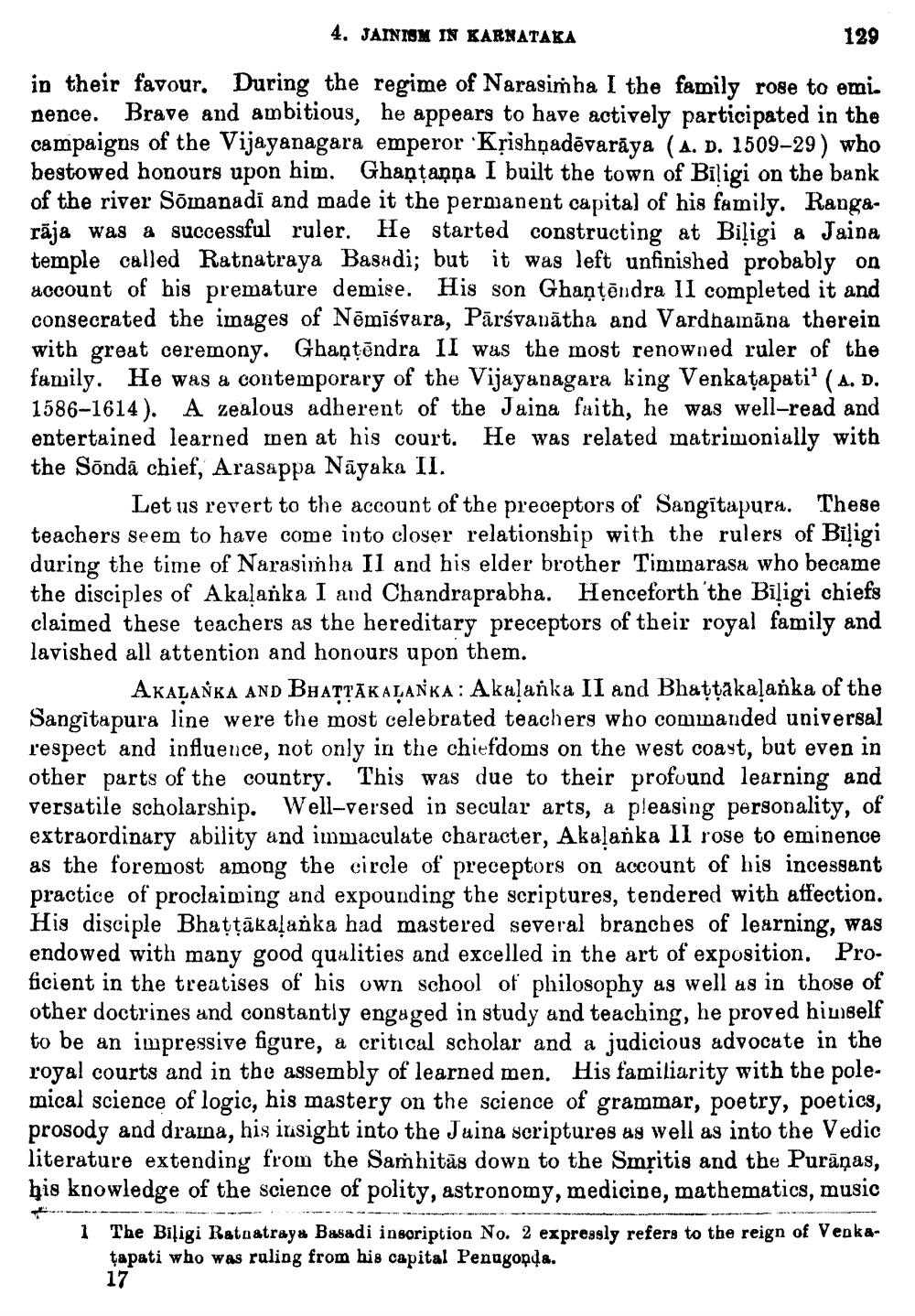________________
4. JAINISM IN KARNATAKA
129
in their favour. During the regime of Narasimha I the family rose to emi. nence. Brave and ambitious, he appears to have actively participated in the campaigns of the Vijayanagara emperor Krishộadēvarāya (A. d. 1509–29) who bestowed honours upon him. Ghanțaņņa I built the town of Biligi on the bank of the river Sõnanadi and made it the permanent capital of his family. Rangarāja was a successful ruler. He started constructing at Biļigi & Jaina temple called Ratnatraya Basadi; but it was left unfinished probably on account of his premature demise. His son Ghanțēndra II completed it and consecrated the images of Nēmīśvara, Pārsvanātha and Vardhamāna therein with great ceremony. Ghaņķēndra II was the most renowned ruler of the family. He was a contemporary of the Vijayanagara king Venkatapati' ( A. D. 1586–1614). A zealous adherent of the Jaina faith, he was well-read and entertained learned men at his court. He was related matrimonially with the Sõndã chief, Arasappa Nāyaka II.
Let us revert to the account of the preceptors of Sangītapura. These teachers seem to have come into closer relationship with the rulers of Biligi during the time of Narasimha Il and his elder brother Timmarasa who became the disciples of Akalanka I and Chandraprabha. Henceforth'the Biligi chiefs claimed these teachers as the hereditary preceptors of their royal family and lavished all attention and honours upon them.
AKAĻANKA AND BHATTĀKAĻANKA: Akalanka II and Bhattakaļanka of the Sangitapura line were the most celebrated teachers who commanded universal l'espect and influence, not only in the chiefdoms on the west coast, but even in other parts of the country. This was due to their profuund learning and versatile scholarship. Well-versed in secular arts, a pleasing personality, of extraordinary ability and immaculate character, Akalanka II rose to eminence as the foremost among the circle of preceptors on account of his incessant practice of proclaiming and expounding the scriptures, tendered with affection. His disciple Bhattākaļanka had mastered several branches of learning, was endowed with many good qualities and excelled in the art of exposition. Proficient in the treatises of his own school of philosophy as well as in those of other doctrines and constantly engaged in study and teaching, he proved himself to be an impressive figure, a critical scholar and a judicious advocate in the royal courts and in the assembly of learned men. His familiarity with the polemical science of logic, his mastery on the science of grammar, poetry, poetics, prosody and drama, his irasight into the Juina scriptures as well as into the Vedic literature extending from the Samhitās down to the Smritis and the Purāņas, his knowledge of the science of polity, astronomy, medicine, mathematics, music
1 The Biligi Ratuatraye Basadi insoription No. 2 expressly refers to the reign of Venka
tapati who was raling from his capital Penagonda. 17




